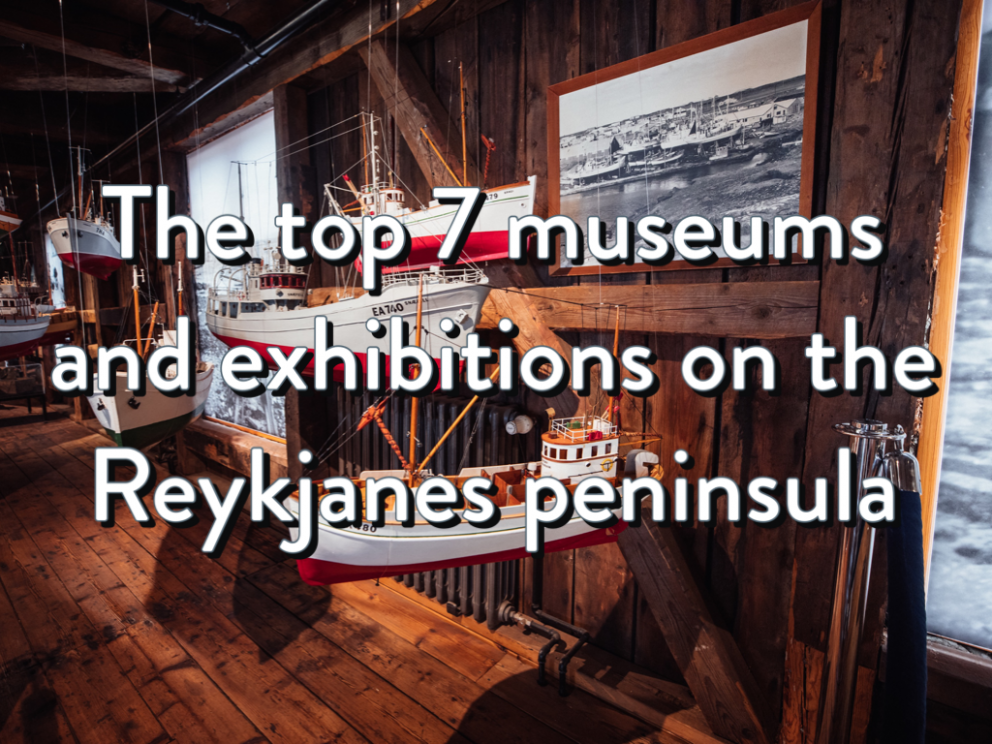The top 7 museums and exhibitions on the Reykjanes Peninsula
The Icelandic Museum of Rock and Roll
Iceland’s musical talent is showcased in this popular museum in Reykjanesbær. Singers and bands such as Björk, The Sugarcubes, Of Mice and Men and Sigur Rós take centre stage, but you’ll learn just as much about Icelandic artists you don’t know. You’ll be issued with an iPad when you buy your ticket and use it to listen to some of their music as you walk through the exhibits which tell the history of the country’s popular music. See if you have a chance of joining them in the charts as you belt out classic tunes in the Sound Lab karaoke booth and attempt to play an electric drum kit, guitar or bass.
Duus Museums including the Art Museum, Boat Hall and Museum of Heritage
Our next three picks form part of the Duus Museums in Reykjanesbær. This fascinating art and cultural centre occupies a series of preserved buildings that were once used for trading and fish processing. The oldest of them, known as Bryggjuhúsið, was built in 1877 and first used as a retail store. You enter via the Art Museum, where contemporary art is displayed in a light and airy gallery. Exhibitions typically last for a few months, so it’s worth taking a look on the museum website to see what’s going to be on show during your visit. The Museum of Heritage explains the area’s social and economic history, while the Boat Hall is another popular space. There, more than a hundred model boats can be viewed, the painstaking work of skipper Grímur Karlsson.
Kvikan (Saltfish Museum)
Before refrigeration became the norm, adding salt to fish was the most effective way of preserving it. Iceland’s abundant fisheries led to the development of a buoyant salting industry, and salt fish was an important export. This captivating museum in Grindavik takes you through the whole process, from the trawlers that caught the fish to the methods used to preserve the catch and send it off to market. Kvikan also acts as a cultural centre and it’s worth keeping an eye out for details of any special events and performances scheduled while you’re in the area.
Viking World
If you have an interest in Iceland’s early settlers then you won’t want to miss this place. The big draw is the Íslendingur, a replica of the Gokstad Viking ship which sailed across the Atlantic in 2000 to commemorate the millennial celebrations of Leif Ericsson’s pioneering voyage. This historic vessel is suspended from the ceiling, allowing visitors to walk underneath and inspect her hull before clambering on board to take a peek at her interior. Other displays and collections within the museum paint a vivid picture of what it might have been like in Iceland all those centuries ago.
Garður Folk Museum
This indoor-outdoor museum is partly housed in Garðskagi’s old processing houses. It covers a range of topics, including Guðni Ingimundarson’s extensive engine collection, all sixty of which are in full working order. The story of the area’s relationship with the sea is told through exhibits that cover maritime history, the fishing industry and everyday life in the past. After you’ve wandered around, enjoy refreshments in the museum’s restaurant and see if you can spot passing dolphins or whales on the water.

